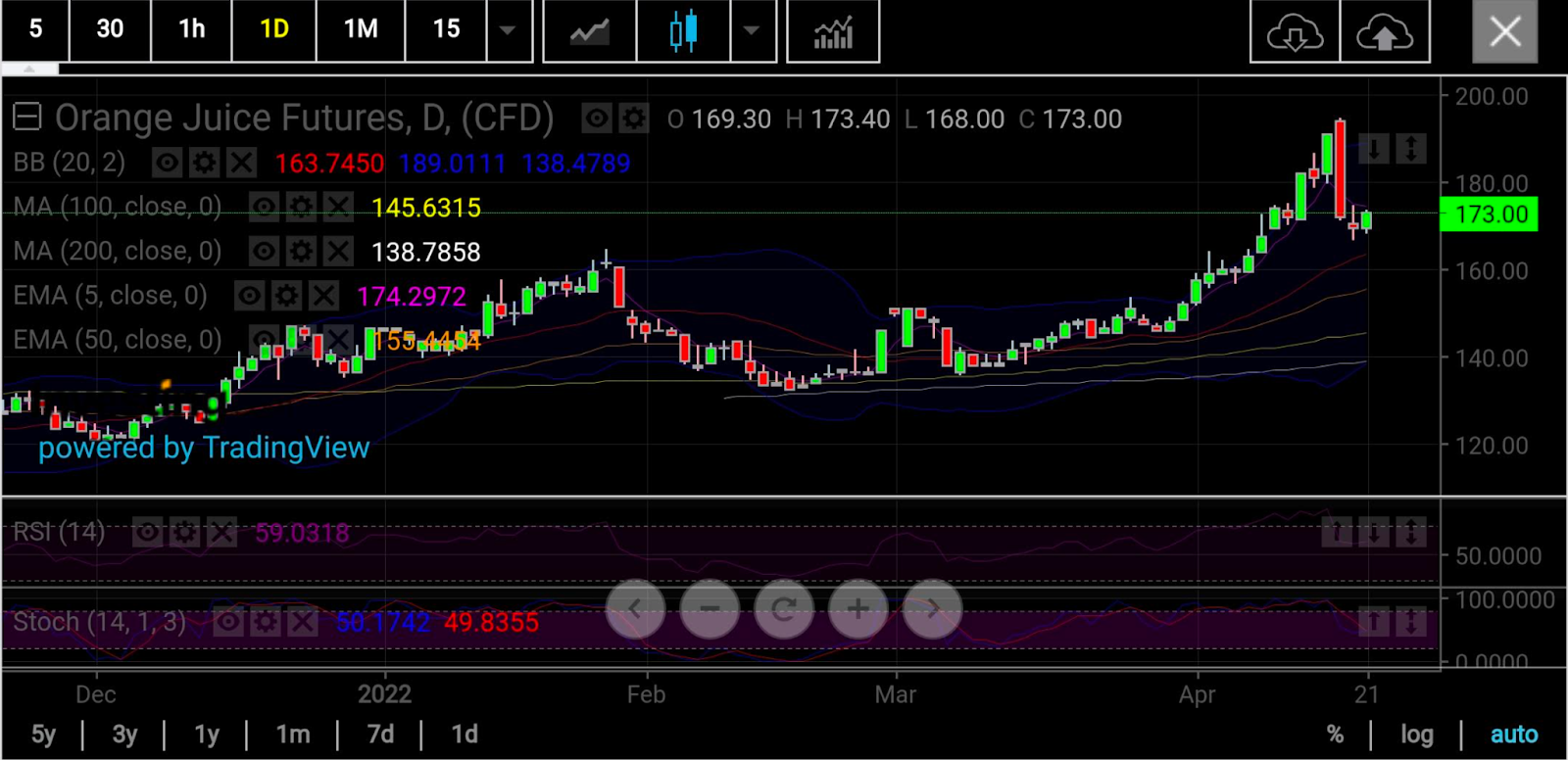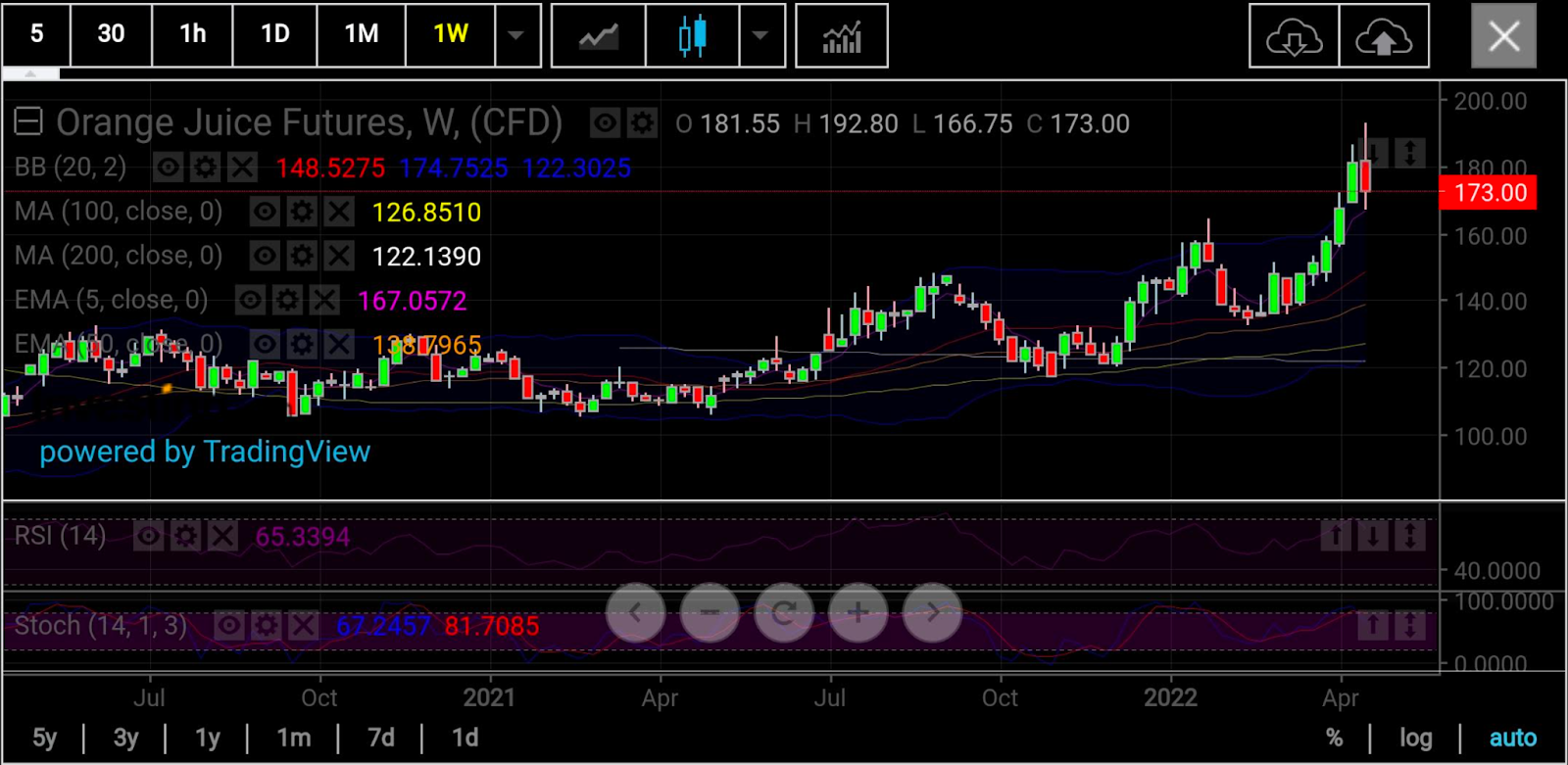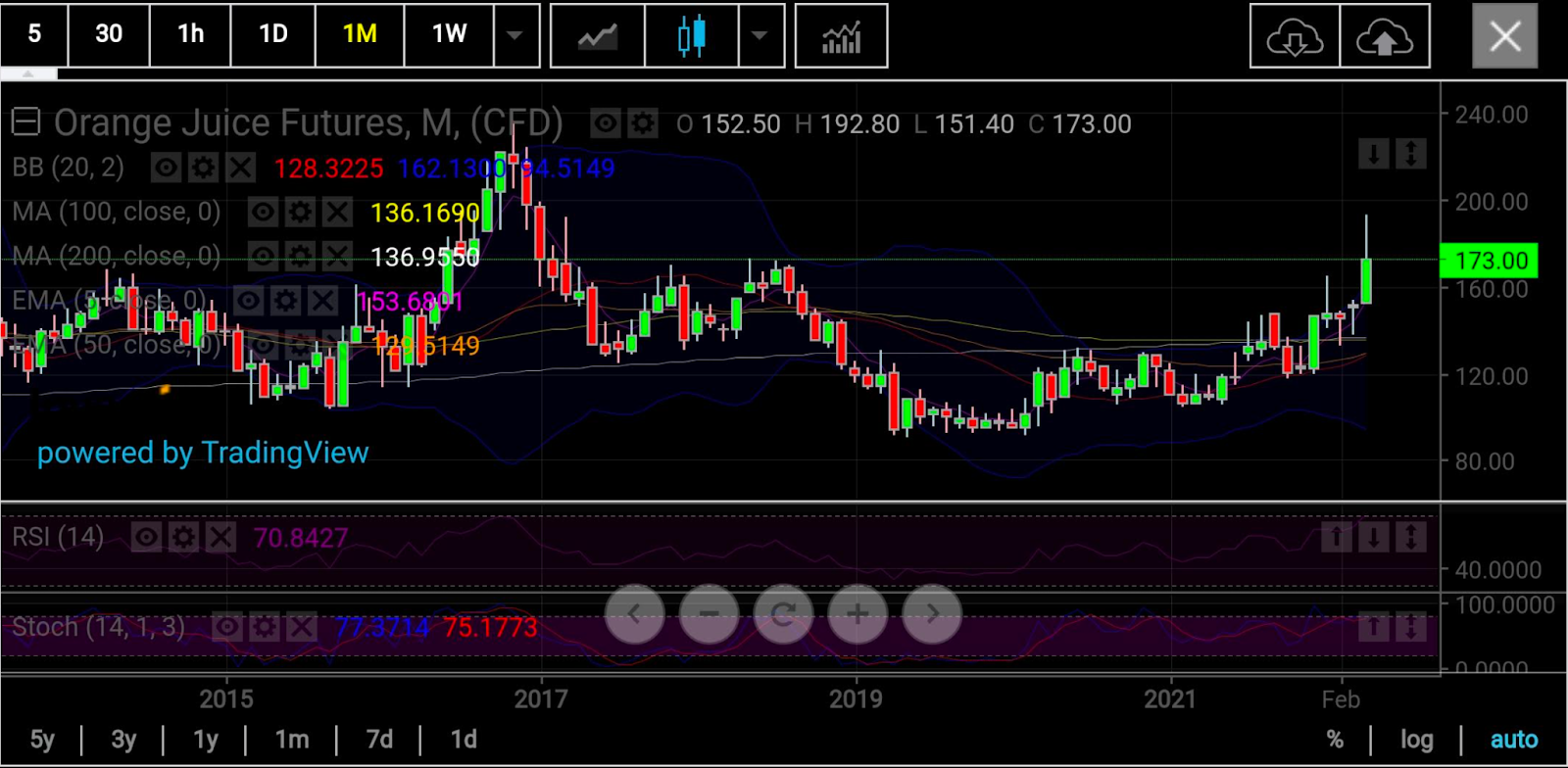The first weekly loss after a 30% rally over five straight weeks might not do much damage to US orange juice (FCOJ) futures, with the market’s psyche and charts pumped up by a decimated global crop and solidly supported technicals.
Futures of frozen concentrated orange juice hovered at $1.73 a pound as the week neared to a close, after coasting to a five-year high of $1.94 on Wednesday.
But the peak also proved to be a trigger for profit-taking as longs holding positions accumulated since the week of Mar. 4— when FCOJ traded as low as $1.36—exited for a breather, handing the market a weekly loss of nearly 5%.

Charts courtesy of skcharting.com
“FCOJ is sharply lower on what appears to be speculative long liquidation,” Jack Scoville, chief crop analyst at Chicago’s Price Futures Group, said in a commentary on Friday, after the market plunged 11.5% over two prior sessions.
But Scoville said FCOJ’s upside appeared intact despite the cataclysmic drop.
“Demand is being priced out of the market as the market now knows it is short oranges and short juice production,” he wrote.
The “greening” of Florida’s oranges—a disease that affects citrus cultivars, causing tree decline—has left the crop in America’s so-called Sunshine State with its lowest production since World War II, Scoville noted.
Brazil—the world’s biggest citrus grower—was, meanwhile, just emerging from a drought that had decimated its output as well.
Topping those were strong technical factors in FCOJ’s favor, with “trends still up on the daily charts,” Scoville said.

Sunil Kumar Dixit, chief technical strategist at skcharting.com, concurred with Scoville’s outlook.
“Orange juice faced technical resistance as is commonly witnessed once prices make a breakout,” said Dixit.
“That pushed down prices from $1.9445 to $1.6650.”
But if FCOJ’s weekly middle Bollinger reading went to 150—at the time of writing it was at 148—it should help the market retrace this week’s five-year highs, said Dixit.
“Real worry for the bulls would be if the weekly settlement goes below $1.70, and progressively declines to $1.63 and $1.50 over the next few weeks,” he added.

The rally in FCOJ futures has squeezed US beverage makers—including Minute Maid brand owner Coca-Cola (NYSE:KO) and Paris-based PAI Partners, which owns Tropicana—forcing them to pass on costs to consumers.
As one of America’s breakfast staples—along with eggs, cereal, milk and sausages—orange juice has contributed to this year’s food inflation, with supermarket prices for the beverage rising by just over 7% in the year to March to reach $7.88 a gallon, according to Nielsen research.
Prolonged US supply woes and poor Brazilian crops have reduced the global supply of FCOJ to around 1.5 million metric tons for the past two years, the lowest levels in a decade, according to estimates by Rabobank analyst Andres Padilla.
Brazil’s frozen orange juice stockpiles are the lowest since 2017, though they are equal to “almost zero” because the juice doesn’t meet industry requirements for acidity and sweetness, Ibiapaba Netto, executive director at CitrusBR, said in comments carried by Bloomberg earlier this month.
The upcoming Brazilian crop is expected to recover since weather has been favorable, though it won’t be “gigantic” because drought effects will linger for a few years, Netto said.
Disclaimer: Barani Krishnan uses a range of views outside his own to bring diversity to his analysis of any market. For neutrality, he sometimes presents contrarian views and market variables. He does not hold positions in the commodities and securities he writes about.
